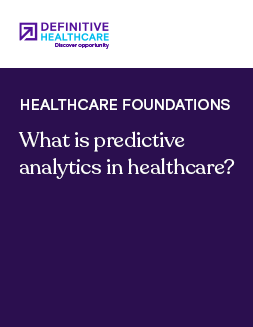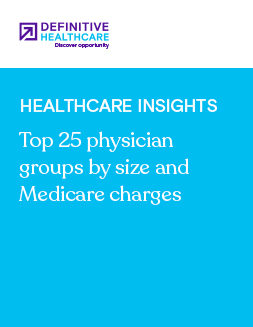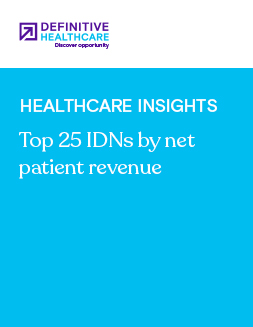Healthcare Insights
Number of health information exchanges by state
Health information exchanges (HIEs) allow healthcare organizations and providers to electronically share a patient’s medical information within a healthcare system, community, or region. Interoperable systems such as HIEs give healthcare providers access to a patient’s medical record regardless of where the patient is receiving care. Such access to medical history can help providers deliver safe and effective care.
Analyzing active HIEs from the Definitive Healthcare ConnectedCareView product, this list shows how many HIEs there are in each state across the country.
Total number of active health information exchanges by state
Fig. 1 Data is from the Definitive Healthcare ConnectedCareView product. HIEs are tracked from a variety of sources and updated daily. Data accessed October 2024.
Which state has the most HIEs?
California has the most health information exchanges in the U.S. with a total of 15. Texas is second for the most health information exchanges with 12. There is a three-way tie for third place: New York, New Jersey, and Pennsylvania all have eight HIEs. Florida has seven HIEs.
Top health information exchanges in California
- Los Angeles Network for Enhanced Services (AKA LANES)
- Orange County Professional RHIO (AKA OCPRHIO)
- Providence HIE
Top health information exchanges in Texas
- North Texas Accountable Healthcare Partnership
- Greater Houston HealthConnect
- C3HIE (FKA Healthcare Access San Antonio)
Which states do not have health information exchanges?
Three states do not currently have an active HIE: Iowa, New Hampshire, and Wyoming.
How many forms of health information exchange are there?
There are three primary types of HIE:
- Directed Exchange. This HIE gives healthcare providers the ability to send and receive healthcare information such as referrals, discharges, laboratory results, and more to other providers.
- Query-Based Exchange. This HIE gives providers the ability to find and request information on a patient from other providers. Typically, this HIE is used if a patient needs emergency or unplanned care.
- Consumer Mediated Exchange. This HIE is similar to a Directed Exchange in that it involves collecting, managing, and sharing health information. Where a Consumer Mediated Exchange is different is that it puts the power in the hands of the patients, enabling them to transfer health information between providers, track and monitor their own health, and correct inaccurate demographic, medical, or billing info.
Why is HIE useful?
HIEs are invaluable tools in modern healthcare for several reasons. First and foremost, they can improve care coordination by allowing healthcare providers to easily access and share patient information, supporting better collaboration and smoother transitions between different providers. With immediate access to comprehensive patient records, HIEs can also enhance patient safety by reducing medication errors and preventing adverse drug interactions.
In addition, HIEs support informed decision-making by giving providers up-to-date information about a patient’s medical history, allergies, and lab results. This could mean fewer duplicate tests, ultimately reducing costs and improving efficiency within the healthcare system.
Moreover, HIEs can contribute to improved population health management by aggregating data across different populations, which allows for better tracking of health trends and outcomes. Plus, HIEs empower patients by giving them more control over their health information, encouraging them to take a more active role in their care.
Finally, HIEs align well with value-based care models by providing the data needed to measure outcomes and enhance the quality of care. In a nutshell, HIEs play a crucial role in modernizing healthcare delivery.
Learn more
Healthcare Insights are developed with healthcare commercial intelligence from the Definitive Healthcare platform. Want even more insights? Start a free trial now and get access to the latest healthcare commercial intelligence on hospitals, physicians, and other healthcare providers.


